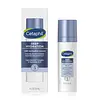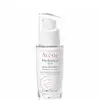What's inside
What's inside
 Key Ingredients
Key Ingredients

 Benefits
Benefits

 Concerns
Concerns

 Ingredients Side-by-side
Ingredients Side-by-side

Water
Skin ConditioningGlycerin
HumectantSorbitol
HumectantCoco-Caprylate/Caprate
EmollientGlyceryl Citrate/Lactate/Linoleate/Oleate
EmulsifyingHelianthus Annuus Seed Oil
EmollientOctyldodecanol
EmollientHexyldecanol
EmollientHexyldecyl Laurate
EmollientDistarch Phosphate
AbsorbentAcrylates/C10-30 Alkyl Acrylate Crosspolymer
Emulsion StabilisingAnhydroxylitol
HumectantButyrospermum Parkii Oil
EmollientCitric Acid
BufferingDicaprylyl Carbonate
EmollientDisodium Cocoyl Glutamate
CleansingGlobularia Alypum Leaf Extract
Skin ConditioningHydrolyzed Hyaluronic Acid
HumectantPanthenol
Skin ConditioningPantolactone
HumectantPhenoxyethanol
PreservativePropylene Glycol
HumectantSodium Benzoate
MaskingSodium Hydroxide
BufferingSodium Polyacrylate
AbsorbentTocopherol
AntioxidantTocopheryl Acetate
AntioxidantXylitol
HumectantXylitylglucoside
HumectantWater, Glycerin, Sorbitol, Coco-Caprylate/Caprate, Glyceryl Citrate/Lactate/Linoleate/Oleate, Helianthus Annuus Seed Oil, Octyldodecanol, Hexyldecanol, Hexyldecyl Laurate, Distarch Phosphate, Acrylates/C10-30 Alkyl Acrylate Crosspolymer, Anhydroxylitol, Butyrospermum Parkii Oil, Citric Acid, Dicaprylyl Carbonate, Disodium Cocoyl Glutamate, Globularia Alypum Leaf Extract, Hydrolyzed Hyaluronic Acid, Panthenol, Pantolactone, Phenoxyethanol, Propylene Glycol, Sodium Benzoate, Sodium Hydroxide, Sodium Polyacrylate, Tocopherol, Tocopheryl Acetate, Xylitol, Xylitylglucoside
Water
Skin ConditioningCaprylic/Capric Triglyceride
MaskingIsocetyl Stearoyl Stearate
EmollientTriethylhexanoin
MaskingGlycerin
Humectant1,2-Hexanediol
Skin ConditioningHydrogenated Starch Hydrolysate
HumectantMethyl Gluceth-20
HumectantBenzoic Acid
MaskingBeta-Sitosterol
Emulsion StabilisingC12-20 Alkyl Glucoside
EmulsifyingC14-22 Alcohols
Emulsion StabilisingCarbomer
Emulsion StabilisingDisodium EDTA
Parfum
MaskingPolyglyceryl-10 Myristate
Skin ConditioningSodium Hydroxide
BufferingTocopheryl Acetate
AntioxidantWater, Caprylic/Capric Triglyceride, Isocetyl Stearoyl Stearate, Triethylhexanoin, Glycerin, 1,2-Hexanediol, Hydrogenated Starch Hydrolysate, Methyl Gluceth-20, Benzoic Acid, Beta-Sitosterol, C12-20 Alkyl Glucoside, C14-22 Alcohols, Carbomer, Disodium EDTA, Parfum, Polyglyceryl-10 Myristate, Sodium Hydroxide, Tocopheryl Acetate
 Reviews
Reviews

Ingredients Explained
These ingredients are found in both products.
Ingredients higher up in an ingredient list are typically present in a larger amount.
Glycerin is already naturally found in your skin. It helps moisturize and protect your skin.
A study from 2016 found glycerin to be more effective as a humectant than AHAs and hyaluronic acid.
As a humectant, it helps the skin stay hydrated by pulling moisture to your skin. The low molecular weight of glycerin allows it to pull moisture into the deeper layers of your skin.
Hydrated skin improves your skin barrier; Your skin barrier helps protect against irritants and bacteria.
Glycerin has also been found to have antimicrobial and antiviral properties. Due to these properties, glycerin is often used in wound and burn treatments.
In cosmetics, glycerin is usually derived from plants such as soybean or palm. However, it can also be sourced from animals, such as tallow or animal fat.
This ingredient is organic, colorless, odorless, and non-toxic.
Glycerin is the name for this ingredient in American English. British English uses Glycerol/Glycerine.
Learn more about GlycerinSodium Hydroxide is also known as lye or caustic soda. It is used to adjust the pH of products; many ingredients require a specific pH to be effective.
In small amounts, sodium hydroxide is considered safe to use. However, large amounts may cause chemical burns due to its high alkaline.
Your skin has a natural pH and acid mantle. This acid mantle helps prevent harmful bacteria from breaking through. The acid mantle also helps keep your skin hydrated.
"Alkaline" refers to a high pH level. A low pH level would be considered acidic.
Learn more about Sodium HydroxideTocopheryl Acetate is AKA Vitamin E. It is an antioxidant and protects your skin from free radicals. Free radicals damage the skin by breaking down collagen.
One study found using Tocopheryl Acetate with Vitamin C decreased the number of sunburned cells.
Tocopheryl Acetate is commonly found in both skincare and dietary supplements.
Learn more about Tocopheryl AcetateWater. It's the most common cosmetic ingredient of all. You'll usually see it at the top of ingredient lists, meaning that it makes up the largest part of the product.
So why is it so popular? Water most often acts as a solvent - this means that it helps dissolve other ingredients into the formulation.
You'll also recognize water as that liquid we all need to stay alive. If you see this, drink a glass of water. Stay hydrated!
Learn more about Water